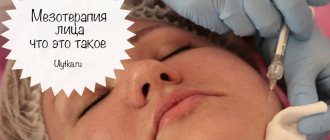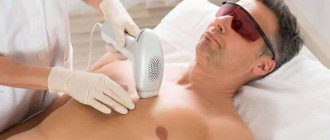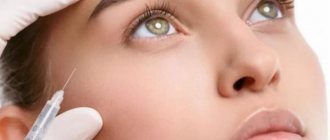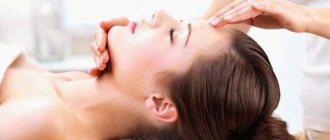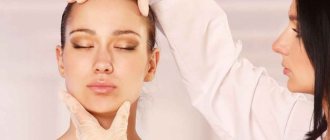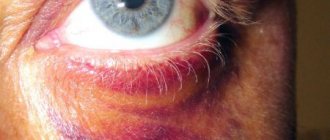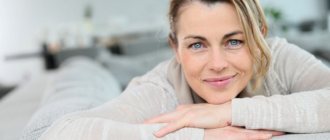Every athlete needs a massage, because it speeds up recovery, reduces muscle soreness and promotes healing of injuries. But for a massage to be most effective, you need to know when the best time is for it, what type of massage is suitable for a runner with his specific load, and whether self-massage works if it is not possible to visit a specialist. In this article we will put everything in its place.
Benefits of massage for runners
Massage can be different, and, accordingly, not every type of massage is equally useful for a representative of a particular sporting area.
Runners benefit from deep tissue massage, which is an effect on the entire muscle, and not on a specific area. It is usually prescribed during periods of intense training, but before a race, a Swedish massage is most needed. The gentle pressure during this massage relaxes the body, relieves muscle tension, increases blood flow and reduces stress levels.
In general, the benefits of any type of massage are as follows:
- Massage stimulates blood circulation and blood flow, speeds up healing in tissues.
- Helps relieve pressure from muscles, tendons, ligaments and fascia, softening tissues and making them more elastic and flexible.
- Massage not only reduces inflammation and stiffness, but even affects the immune system, causing it to function at an optimal level. In other words, regular massage will save an athlete even from a cold!
- Massage helps balance the musculoskeletal system, preventing knee injuries, hamstring pain and stress fractures.
- The stroking movements of the massage help to stretch the bundles of muscle fibers sideways and longitudinally in a way that regular stretching cannot stretch them. This relieves accumulated tension and pressure in the tissues.
- By increasing blood flow to the tissues after a massage, the blood vessels dilate, and the vital nutrients you get from food are better able to reach the damaged tissues.
- Massage improves the efficiency of the circulatory system. This system is responsible for the transport of oxygen, the already mentioned delivery of nutrients and the removal of waste at the cellular level.
- Massage increases and restores joint range of motion.
- Massage reduces cortisol and adrenaline levels.
It must be said that massage is not an immediate effect. So, the deeper the massage, the more time it takes for the body to recover and respond positively. If your legs feel sluggish and heavy the next day, that's normal. That's why it's important to schedule at least one easy day between a deep massage and a hard workout.
This also needs to be taken into account when planning the procedure before the race. At least 3-5 days before the start you should get a massage.
Subscribe to “Marathon Man” on Telegram. Announcements of articles and useful selections every week.
Keep in mind that a sports massage is very different from a spa or relaxation massage. Applying deep pressure to correct soft tissue requires knowledge and experience, so the procedure should only be performed by a licensed and trained professional.
Be prepared for some soreness when working through stiff muscles. However, after this procedure there should be no bruises on the body.
What determines the duration of the session?
The duration of the massage is affected by:
- Purpose and type of procedure;
- Local or general study;
- Individual tolerance;
- The condition and age of the patient;
Availability of special indications or recommendations of a doctor, cosmetologist, physiotherapist. Any type of massage is aimed at achieving relaxation, improving blood circulation, restoring strength, reducing body volume, increasing muscle tone and improving overall human health.
The session makes it possible to monitor the state of the circulatory system, the functioning of internal organs, emotional and hormonal levels.
The benefits of the procedures are:
- Dilation of blood vessels and capillaries, which leads to free blood flow and normalization of pressure;
- Relaxation of the muscles of the neck, back, legs, arms;
- Relaxation of internal organs;
- Improving the functioning of the lymphatic system;
Increasing joint mobility. Massage will help maintain the flexibility of the spine and increase the elasticity of the ligaments.
Regular sessions promote rapid recovery from musculoskeletal diseases and help cope with stress, chronic fatigue and depression.
Contraindications
There are many indications for the procedures - these include age-related skin changes, stretch marks, cellulite, blood and heart diseases, etc. But there are also contraindications in which sessions are prohibited. These include:
- Oncology;
- Diabetes;
- Hypertension 3 degrees;
- Blood diseases characterized by poor clotting;
- Thrombophlebitis, etc.
There are also temporary contraindications or restrictions - this is a temporary illness or condition of the client during which massage is impossible. This could be pregnancy, alcohol intoxication, an infectious disease, chronic diseases in the acute stage, or elevated body temperature. Another group of restrictions are local contraindications: psoriasis, the presence of warts or skin lesions in the area of treatment, enlarged lymph nodes.
Read also…. How to massage children with cerebral palsy (CP)
How long after exercise is massage effective?
Is there a good time for a massage? The only rule you need to remember is to never get a massage right before or right after an important race or intense workout. Ignoring this rule will contribute to poor results and damage to muscles and tissues.
Why is that? The answer is simple: sports massage is a workout in itself. While you exercise, you may feel muscle pain, and the same thing happens during a massage due to the deep pressure that releases waste products at the cellular level. Post-race massage should be scheduled after 3-5 days, when the muscles are no longer sore to the touch.
You may now be wondering why, then, at large mass competitions, finishers are offered the services of massage therapists. There is no benefit to this, because the body needs at least two hours to cool down and return to normal, so don’t wait in line at the massage table.
It is not necessary to do a post-workout massage within a few days, but you need to wait a day or two. This is especially true for long runs. In general, it is better to plan massage sessions based on important races, long training sessions and key running work.
And remember, just like with training, consistency and systematicity are just as important in massage to take advantage of its cumulative benefits.
How often should you get a sports massage?
The frequency of massage treatments depends entirely on the athlete: on the volume and intensity of his training, as well as his budget. A visit to a specialist even once a month will help prevent injuries by covering areas that are difficult to reach for self-massage.
If you can’t go to the office every month, you need to provide at least 2 sessions during the heaviest training block or at a time when the program includes intense speed work.
However, the effects and benefits of massage increase with consistent, repeated sessions. Getting one massage before a race will not have the same effect as a therapy program throughout your entire preparation.
As for self-massage, your muscles will appreciate it if you stretch them daily, either in the evening after a hard workout or the next morning.
What do you need to know before the procedure?
The technique depends on the degree of development of the pathological process. At stages 1-2 of the development of osteochondrosis of the cervical spine, classical techniques are used, and kneading and squeezing are performed with noticeable weighting. At stage 3 of the development of the pathology, it is prohibited to use vibration, and in more complex forms of the disease, only gentle rubbing and shallow stroking are allowed.
The duration of the course of massage treatment for SCH is selected individually for each patient. On average, the procedure time is 30-45 minutes. The session can be carried out from 1 to 5 times a week, depending on the patient’s condition and the type of course used. It is advisable to repeat the course after 4-8 weeks to consolidate the effective result.
Almost all medical institutions have specialists who are ready to provide assistance either one-time or for a series of sessions. The cost of such a service starts from 200-2500 rubles per session of a full, properly performed massage for cervical osteochondrosis.
It should be borne in mind that the duration of the course of treatment is about 2 weeks, and 2-4 such courses must be completed per year.
You can always find ready-made massage products on sale. These include all kinds of oils, talc, and baby powder. The advantages of massage using oil are good gliding of the massage therapist’s hands, quite pleasant sensations, and warming up the surface.
Disadvantages: slipping of the hands when kneading and an unpleasant feeling of a film on the back after the procedure. There are also special ointments, gels and creams that have analgesic, anti-inflammatory, warming and decongestant effects.
The cost of complex therapy depends on the clinical course of the pathological process. The number of required courses and the cost of the work of the selected specialist are also taken into account.
Self-massage
We have already said that massage works for our body only if it is done regularly. But what if it is not possible to visit a massage therapist every week? Then you can try self-massage using special rollers, a tennis ball, a massage chair, or just your hands.
A light massage can be performed daily, gently massaging the feet, Achilles tendons, calves, front and back of the thighs.
When self-massaging, the rule applies: during the massage you should not feel severe and prolonged pain. If there is one, consult a sports doctor, because you may be dealing with an injury.
Read on the topic: Why do your legs hurt after running, and what to do about it?
What kind of neck disease is this?
Osteochondrosis of the cervical spine is diagnosed with degenerative, dystrophic lesions of the intervertebral discs of the neck and is the most common pathology of the spine.
The clinical course of the disease is manifested by characteristic signs:
- frequent dizziness and headaches;
- weakness and deterioration in health;
- noise in ears;
- impaired visual function (decreased visual acuity and frequent appearance of “spots” before the eyes).
Read more about dizziness and nausea with SCH here.
With the development of the pathological process, numbness of the hands appears, a change in their sensitivity and almost complete immobilization. The joints of the upper limbs and chest become stiff, and an unpleasant and painful crunch appears in the neck. Often the cause of the development of osteochondrosis is inactivity of the neck area, which provokes loss of fluid in the intervertebral discs, and, as a result, a decrease in the elasticity of cartilage.
